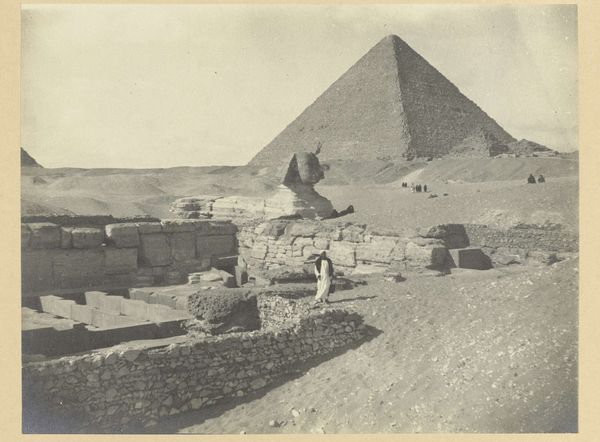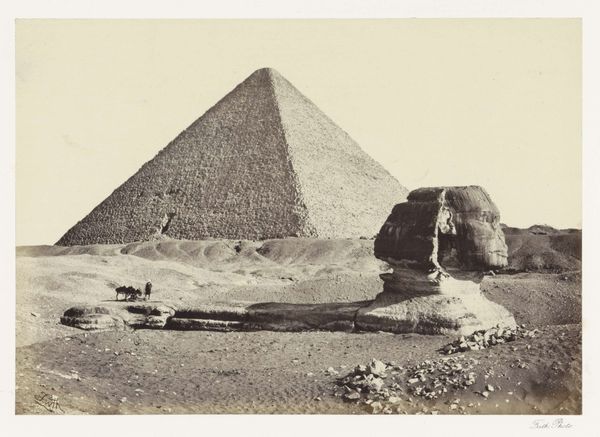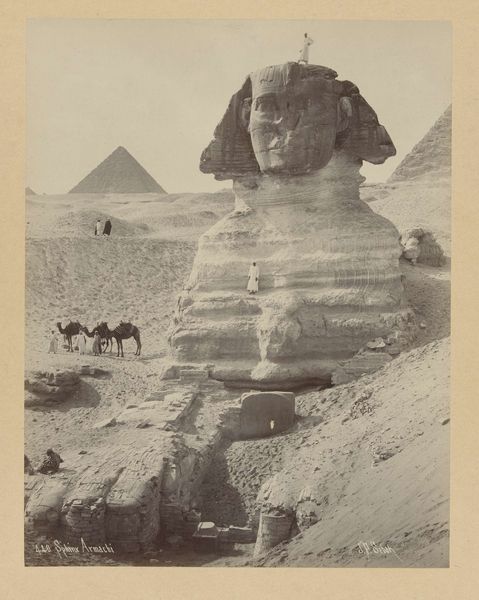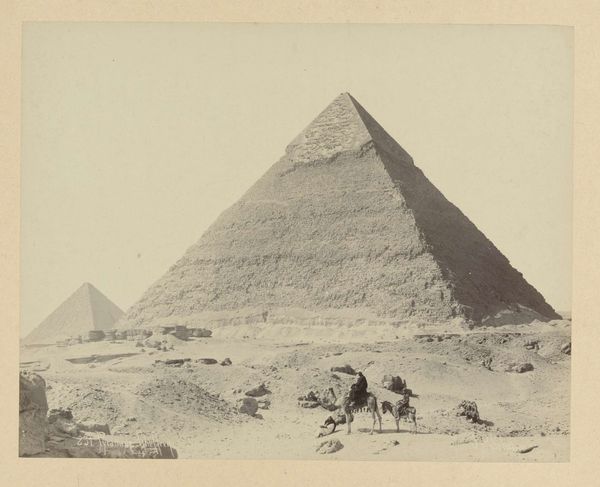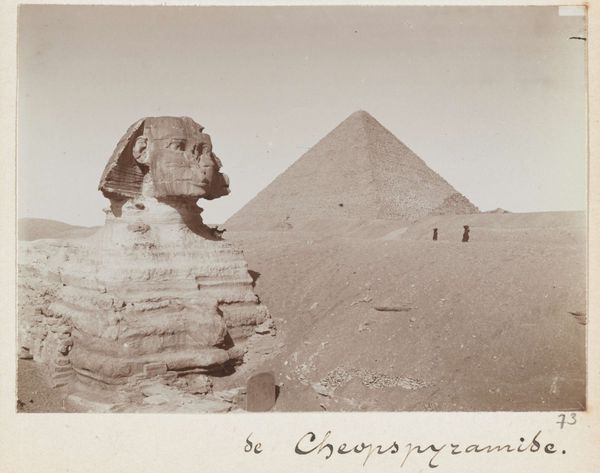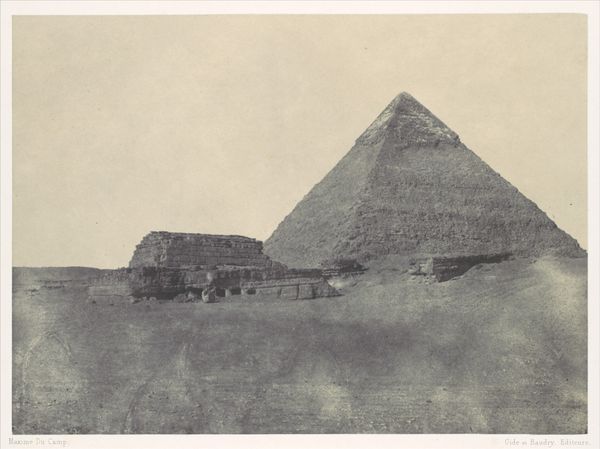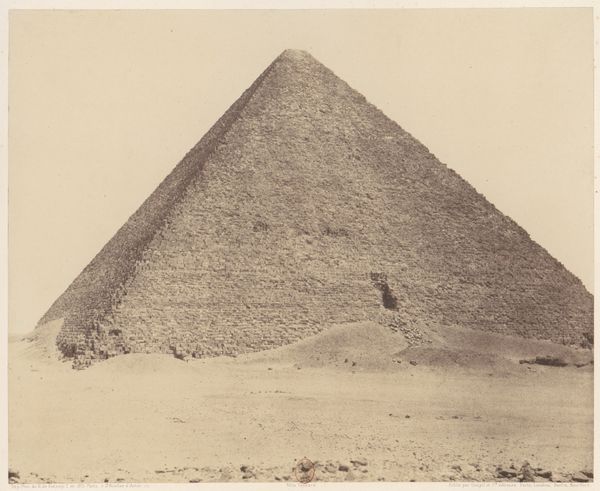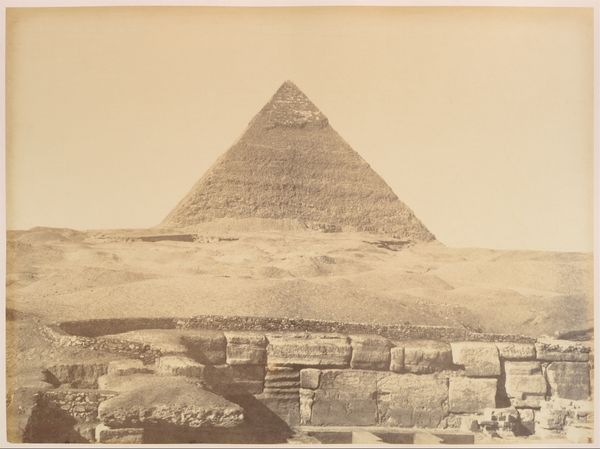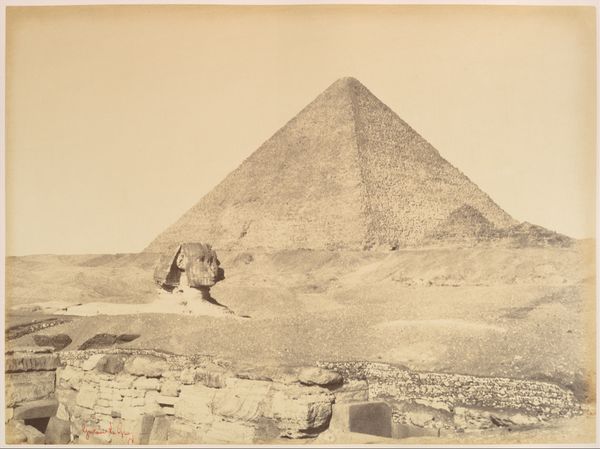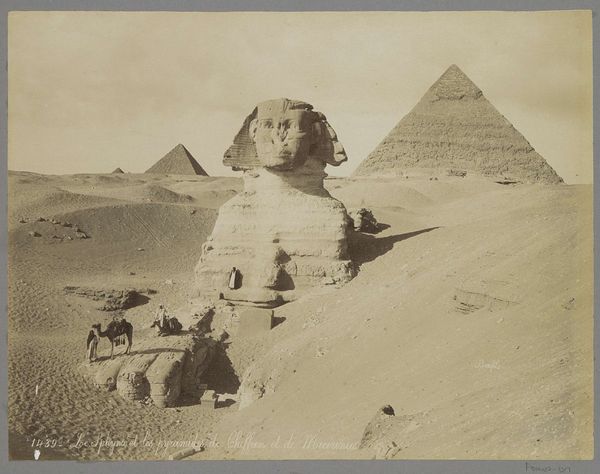
photography, gelatin-silver-print
#
landscape
#
ancient-egyptian-art
#
photography
#
ancient-mediterranean
#
gelatin-silver-print
Dimensions: height 72 mm, width 134 mm
Copyright: Rijks Museum: Open Domain
Editor: So, this is a photograph entitled "Gezicht op de sfinx en een piramide van Gizeh," or "View of the Sphinx and a Pyramid of Giza," taken before 1905 by Lichtenstern & Harari. It’s a gelatin silver print. The scene is impressive, makes you wonder what stories these ancient monuments could tell. How do you interpret this work? Curator: Beyond the immediate visual, I see this image as a powerful statement on colonialism and orientalism. It was created during a time of intense Western fascination with, and control over, Egypt. What do you notice about the viewpoint and framing of the photograph? Editor: The pyramid is far off and the sphinx is closer but sort of blocked. It feels like the photographer is positioned apart. Curator: Exactly. The composition reinforces a Western gaze, where the Sphinx and pyramid, symbols of Egyptian power and history, become objects to be captured and possessed visually. The choice to use photography, a relatively new medium at the time, also speaks to the desire to document and catalog the “exotic” Other. How does the stark black and white medium affect your perception? Editor: It makes it seem more distant and like a relic of the past. Curator: Precisely! Consider how that reinforces a sense of cultural and historical distance. This photo, presented to a Western audience, subtly implies a sense of superiority. Even today, images like these shape perceptions and reinforce power dynamics related to the representation of different cultures and places. It invites a critical assessment of image-making practices in representing “the Other.” Editor: I hadn't considered it in that light, but it makes so much sense now. It is a reminder to be aware of power dynamics in image creation. Curator: Absolutely, recognizing historical context allows us to consider images like these beyond just aesthetics.
Comments
No comments
Be the first to comment and join the conversation on the ultimate creative platform.
